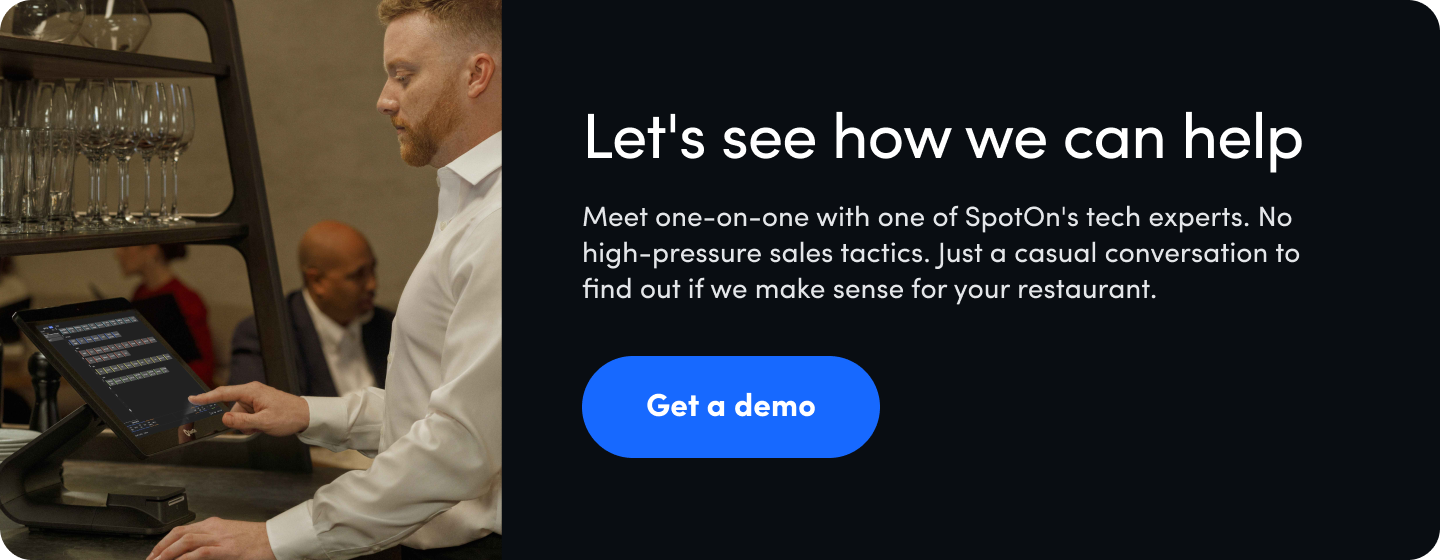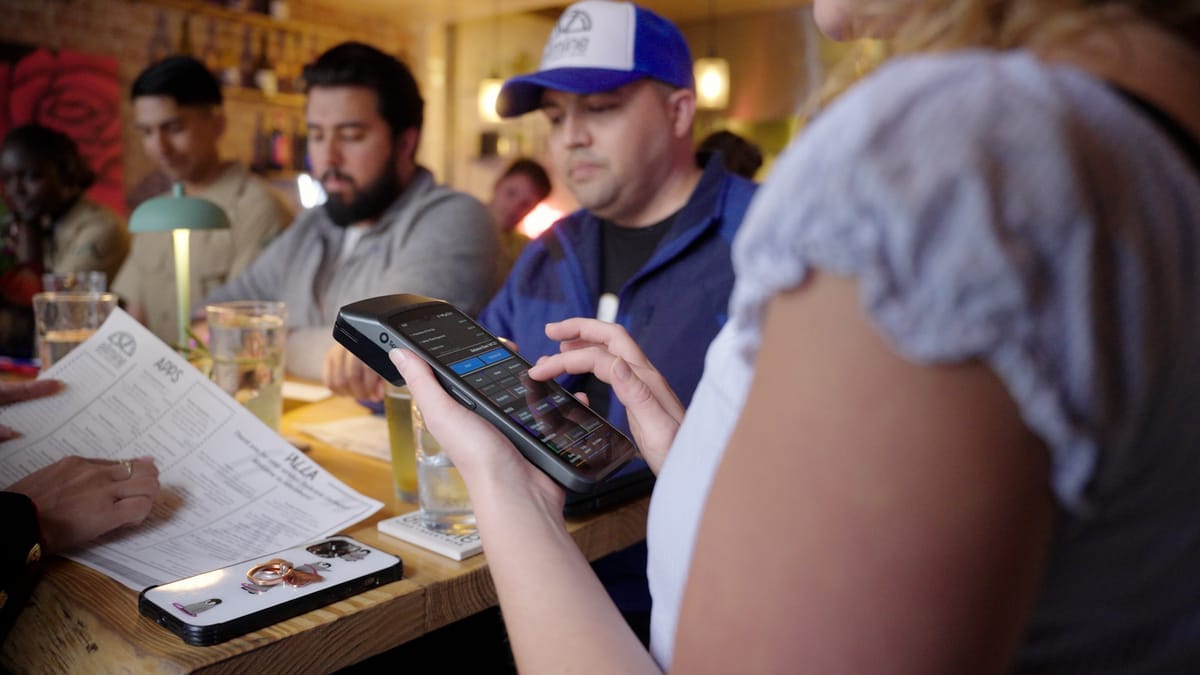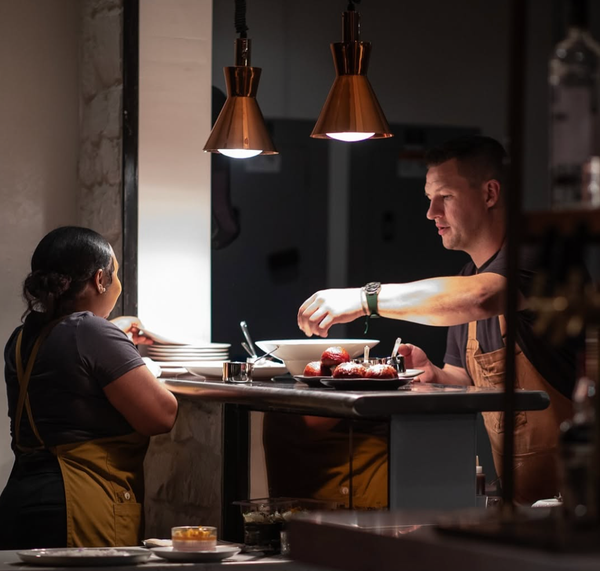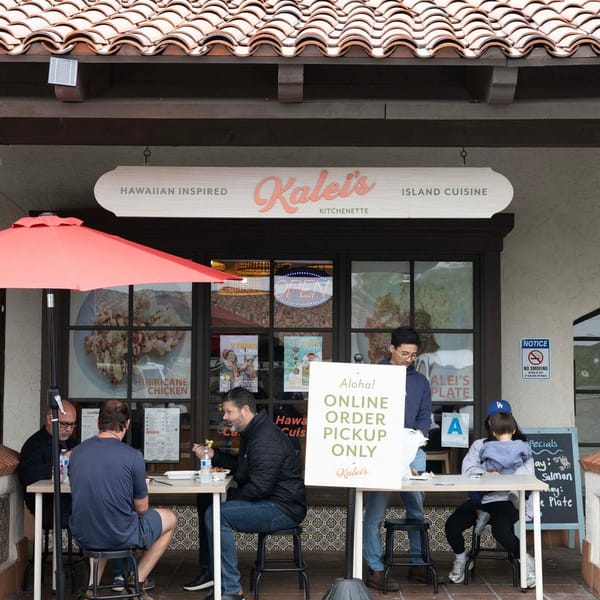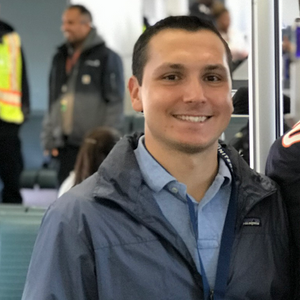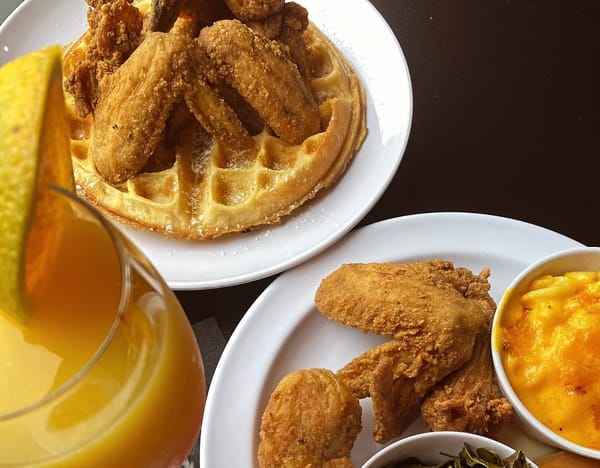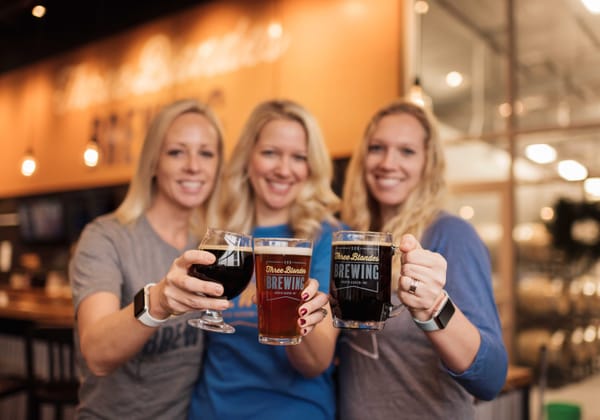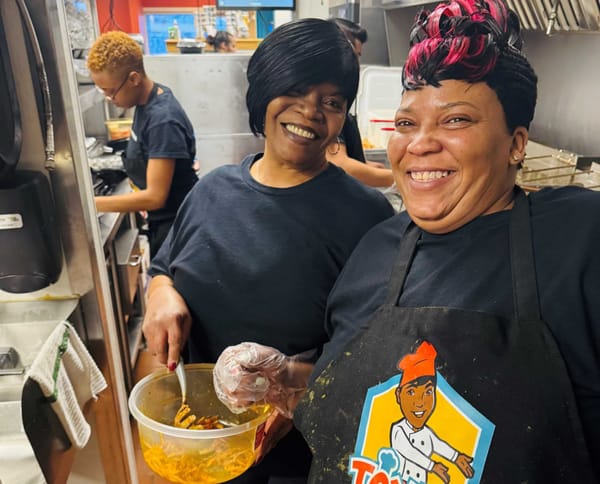Restaurant operations are often compared to a swimming duck: calm on the surface, paddling furiously under water. At Allmine in Oceanside, California, the comparison doesn’t hold. They operate an open kitchen—there’s no proverbial water to hide behind. It doesn’t mean things still don’t go awry. But thanks to a staff deeply committed to hospitality, thoughtful forecasting and scheduling, plus a little invisible technology, even a packed dinner service at Allmine looks remarkably smooth.
In its past life, the restaurant space that’s now Allmine was a pizza-by-the-slice shop, slinging slice and soda combos to beachgoers. A humble neighborhood necessity, sure, but destination restaurant it was not. Owner Roxana Pavel had a vision—and years of hospitality experience at major hotels that helped her understand what was essential to great operations.
Fast forward, Allmine was three weeks away from their opening night and the restaurant was still mostly dust and flour. “Opening a restaurant is like walking a lot of dogs. Not all dogs behave. Some are faster. Some want to jump. Some want to slow down,” says Pavel. “You basically have to keep walking and maintain the pace.” Most vendors took in the state of the restaurant and responded in disbelief to Pavel’s ambitious opening date. But SpotOn Hospitality Specialist Carlos Carbajal took a different tack.
“Carlos went over all the benefits, integrations, and support, but he didn’t try to sell me. He listened to what I needed and tried to fit this small restaurant’s needs,” says Pavel. With 20 years of experience running room service and front-of-house in hotels, Pavel knew that when technology is working best, it’s completely invisible. Restaurant technology should more closely resemble a competent floor manager than a needy guest. More than just a restaurant point-of-sale, it should be a restaurant management system. Consistent and reliable tech, in Pavel’s view, lets her focus on training her staff to be present and knowledgeable.
Pavel’s team is just as integral to the operation as mozzarella, tomatoes, and flour. From her small but mighty dishwasher to her appropriately mustachioed head chef Sid Hilarides, they all fall under the banner of “amazing humans,” essential to Pavel’s operation. Proving support like wine tastings and hospitality training, but also thoughtful scheduling and staffing decisions, is Pavel’s main priority. It’s no easy feat in a from-scratch kitchen, where everything from the sauces to the sausage is made in house. Pavel can accurately forecast popularity using her Product Mix report, reservation system, and sales history to get a sense of potential foot traffic and which dishes may be the most popular.
The need for accurate foresight has only become more necessary with Allmine’s rising social media prominence. Pavel is savvy. She works with local influencers and spends time crafting email newsletters for which she’s been stopped more than once at her local Trader Joe’s.
The Allmine menu translates deliciously to Instagram. Their towering, béchamel-laden lasagna and lemon-dappled crab ravioli are both remarkably photogenic. But virality isn’t the goal at Allmine. It’s warm hospitality, delicious food, and a place for the community to gather. Pavel hosts book clubs, board game nights, wine tastings, celebrations, creating a community that lasts much longer than a fickle algorithm cycle.
Allmine can deftly handle large parties and buyouts, but it also excels at another operational challenge: the table for one. Bar seats face the kitchen, where guests will see staff wordlessly communicate and place gleaming blistered Neo-Neapolitan style pizzas on the expo. Guests walk in and say “just one” and Pavel corrects them – “No ‘just’,” says Pavel, “table for one. We don’t minimize ourselves just because we’re dining solo.” Turns out, the guests are mostly right but Pavel isn’t afraid to prove them wrong every now and then.
